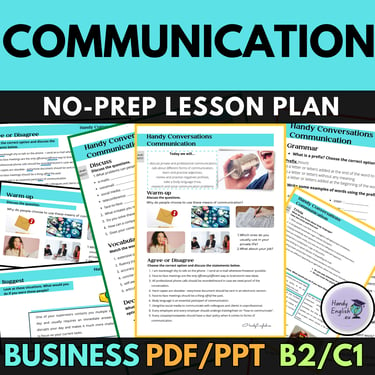[BLOG] Teaching Abroad: A Teacher’s Survival Guide #3: Teaching English in Multicultural Classrooms
Teaching English in multicultural classrooms comes with unique challenges and incredible opportunities. This blog explores how to embrace diversity, build cultural sensitivity, and create an inclusive learning environment that helps every student thrive. Whether you're a new teacher or an experienced one, you'll find practical tips and insights to navigate and celebrate the richness of multicultural education.
Kaya
12/29/2024
Please keep in mind that the opinions posted on this blog are my own.
Everybody might have a different experience and opinions, and that's OK.
Teaching English is already a challenging yet rewarding experience, but when you add the element of a multicultural classroom, it’s a whole new ballgame. It’s not just about language anymore – it’s about understanding diverse cultures, adapting your methods, and building an inclusive learning environment. Whether you’re a seasoned teacher or just starting your journey, here’s how you can navigate the vibrant world of multicultural classrooms.
Embracing Diversity: Why It Matters
When you teach in a multicultural classroom, you’re not just an English teacher; you’re also a cultural mediator. Each student brings their own experiences, traditions, and ways of thinking to the table. Recognising and celebrating this diversity can transform your classroom into a rich tapestry of perspectives.
But why is it important? Firstly, embracing diversity fosters a sense of belonging among your students. When learners feel respected and understood, they’re more likely to engage and thrive. Secondly, cultural awareness prepares students for a globalised world. By learning from each other, they gain skills that go far beyond grammar and vocabulary.
Building an Inclusive Classroom Environment
Creating an inclusive classroom doesn’t happen overnight, but small steps make a big difference. Start by getting to know your students. Learn about their backgrounds, interests, and goals. Showing genuine curiosity can break down barriers and build trust.
Language support is another key element. Not all students will be at the same proficiency level, and that’s okay. Pairing stronger learners with those who need more help can encourage collaboration. Visual aids, bilingual materials, and technology tools can also bridge language gaps effectively.
Lastly, set clear expectations for respect and inclusivity. Discuss cultural differences openly but sensitively. Address misunderstandings as learning opportunities rather than conflicts. When students see you as a fair and approachable teacher, they’re more likely to follow suit.
Adapting Your Teaching Methods
A one-size-fits-all approach rarely works in multicultural classrooms. Be prepared to adapt your teaching methods to suit your students’ needs. For instance, some cultures prioritise group work, while others might value individual achievement. Mixing up activities can cater to different preferences and learning styles.
Another tip is to incorporate culturally relevant materials into your lessons. If you’re discussing holidays, why not ask your students to share traditions from their countries? This not only makes learning more engaging but also validates their identities.
Also, keep in mind that body language, humour, and idioms don’t always translate well. Be mindful of how you communicate and check for understanding regularly. Sometimes, what’s funny in one culture can be puzzling or even offensive in another.
Overcoming Challenges
Teaching in a multicultural classroom isn’t without its challenges. Miscommunication is perhaps the most common hurdle. Students might misunderstand instructions or feel hesitant to speak up. To combat this, use simple, clear language and repeat key points. Encouraging questions and feedback can also clarify any doubts.
Another challenge is managing cultural differences in behaviour. For example, some students might be more reserved, while others are outspoken. As a teacher, it’s your job to balance these dynamics and ensure everyone has a voice.
Finally, be prepared for moments of cultural clash. These aren’t necessarily bad – they’re opportunities to learn. When such moments arise, approach them with patience and empathy. Encourage open discussions and remind students that differences are what make us unique.
Benefits of Teaching Multicultural Classrooms
Despite the challenges, teaching in a multicultural classroom is incredibly rewarding. You’ll witness your students not only learning English but also growing as individuals. They’ll develop intercultural competence, build friendships across borders, and gain confidence in expressing themselves.
For you as a teacher, it’s a chance to expand your horizons. You’ll learn about new cultures, refine your teaching skills, and perhaps even pick up a few words in different languages. It’s a constant process of growth, both professionally and personally.
Final Thoughts
Teaching English in multicultural classrooms is more than a job – it’s a journey. It’s about navigating challenges, embracing diversity, and creating a space where every student feels valued. Yes, it’s hard work, but the rewards are worth it. So, take a deep breath, keep an open mind, and enjoy the ride. Your students aren’t the only ones learning; you’ll come away with lessons that last a lifetime.






Get in touch!
Copyright Handy English 2021
”I used this with an adult ELL tutee of mine. I appreciate that the language was accessible for multiple proficiency levels, but the content wasn't obviously geared for children and still useful for older learners.”
August 7, 2023
”Another great resource from Handy English! I used it to give my students more in-depth practise into quantifiers and restaurant language. It's great resource and can be used after the students learn the basics of language for the restaurants and quantifiers. Definitely helped solidify what they learnt.”
February 5, 2023
”Love this resource. Great for fast finishers and also those in small ESL groups. Great for all macro skills as discussion and brainstorming is a great precursor for writing submissions.”
- Gail M.
June 25, 2023
Here's what other ESL Teachers say
Handy English: 4.8/5
”This was a wonderful resource for my students. It helped me introduce them easily to new concepts and it was quite engaging. Thanks!”
- Kiara B.
October 10, 2023
”Great resource for learning vocabulary, which supports comprehension and speaking skills.”
- Lori-Ann W.
September 29, 2023
”What a great way to get a healthy debate going. My students struggle with impulse control and they all have kept it kind and appropriate.”
- Alicia H.
September 17, 2023






